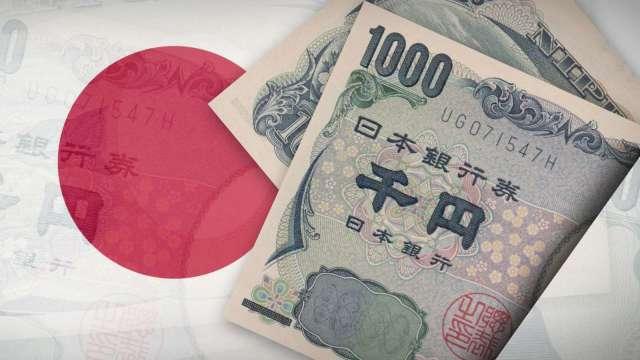 |
| Gold V.1.3.1 signal Telegram Channel (English) |

U.S. Tariff Hike Pressures Japan’s Inflation and Rate Outlook—BOJ’s Ueda Warns of Export Strain Impacting Corporate Pricing and Yen Exchange Rate
2025-05-08 @ 18:42
**Bank of Japan Cautious Amid U.S. Tariff Moves and Inflation Uncertainty**
Kazuo Ueda, Governor of the Bank of Japan, recently warned that fresh U.S. tariffs could exert downward pressure on Japanese inflation. While food prices in Japan continue to climb, Ueda noted that the broader inflation outlook remains uncertain—especially if external risks weaken corporate pricing power and drag down domestic price momentum.
Latest data from Japan’s Ministry of Internal Affairs shows the core Consumer Price Index (excluding fresh food) in Tokyo rose 3.4% year-over-year in April, the highest since July 2023. The increase was largely driven by a reduction in government electricity subsidies and rising food prices. Meanwhile, the “core-core CPI,” which also strips out energy costs, rose to 3.1%, indicating continued pressure from domestic demand.
Still, Ueda remains cautious. He emphasized that higher U.S. tariffs could dampen global trade, making it harder for Japanese companies to pass rising costs onto consumers—a scenario that could reverse current inflation trends.
At its latest policy meeting, the central bank kept its short-term interest rate at 0.5%, but lowered its economic growth forecast for fiscal year 2025 from 1.0% to 0.5%. This downward revision reflects concerns over global headwinds, especially shifts in U.S. trade policy.
Markets took notice. Japan’s 10-year government bond yield recently rose to 1.325%, indicating investor focus on BOJ’s next moves. According to Keisuke Tsuruta, fixed income strategist at Mitsubishi UFJ Morgan Stanley Securities, the combination of mixed inflation signals and an uncertain growth outlook is making the BOJ’s policy path more complex.
On the currency front, the yen saw a modest rebound to 144.04 per dollar on Thursday amid safe-haven demand, but the broader trend still favors a strong dollar. U.S. Federal Reserve Chair Jerome Powell’s comments last week—signaling steady rates and highlighting inflation risks—highlight a stark contrast with BOJ’s wait-and-see approach.
Equity markets also reflected these tensions. The Nikkei 225 gained 0.8% on Thursday, with NTT Data jumping 12% on acquisition news, offering some relief amid concerns about a brewing U.S.-Japan trade conflict.
In ongoing trade talks in Washington, Japan has proposed several compromises—including more U.S. agricultural imports and greater access to its auto market—but the U.S. remains firm on imposing tariffs of up to 25% on Japanese cars and parts. Japanese Economy Minister Akazawa candidly warned that if the U.S. proceeds, the impact on Japan’s manufacturing sector and jobs could be devastating. With less than two months left before U.S. tariff hikes take effect, there’s little sign of an imminent agreement, and markets are on edge.
Looking ahead, Ueda reiterated the BOJ’s commitment to a data-driven approach. Future rate hikes will depend on inflation developments, U.S. policy moves, and domestic economic indicators. Analysts say if second-quarter GDP shows a slowdown or corporate earnings come under pressure from tariffs, the BOJ may delay its expected rate hike from Q3 to Q4. Futures markets suggest traders have already pushed rate hike bets from July to October, signaling growing uncertainty.
For now, the BOJ is expected to remain cautious—balancing the dual challenge of supporting the recovery while keeping inflation in check. How well it navigates this path could shape the trajectory of the yen, interest rates, and Japanese assets in the months ahead.


![[Daily Closing 🔔] Gold – Gold Price Outlook: Impact of U.S. Jobs Data and China-U.S. Trade Relations on Global Spot Gold Trends](https://int.1uptick.com/wp-content/uploads/2025/05/2025-05-03T061704.162Z-file-1024x567.png)
![[Daily Closing 🔔] Gold – Gold Prices Slip Amid Volatility on Thursday as Stronger U.S. Dollar Weighs on Market](https://int.1uptick.com/wp-content/uploads/2025/05/2025-05-02T053426.282Z-file-1024x571.png)
![[Daily Closing 🔔] Gold – Gold Prices Slip as Stronger U.S. Dollar and Easing Safe-Haven Demand Weigh on Market](https://int.1uptick.com/wp-content/uploads/2025/05/2025-05-01T045328.050Z-file-1024x576.png)
![[Daily Closing 🔔] Gold – Gold Prices Slip as Markets Await Key U.S. Economic Data Release](https://int.1uptick.com/wp-content/uploads/2025/04/2025-04-30T071609.409Z-file.jpeg)


